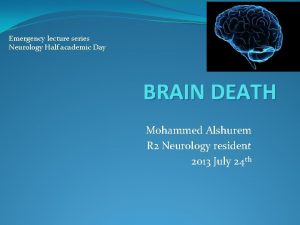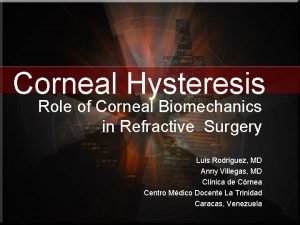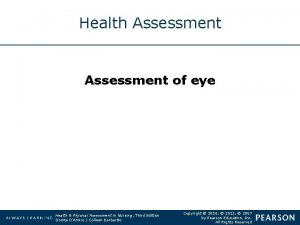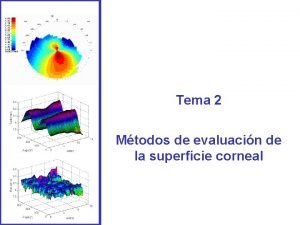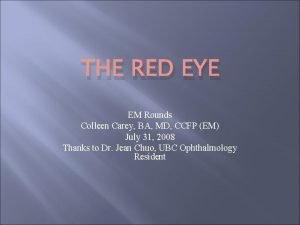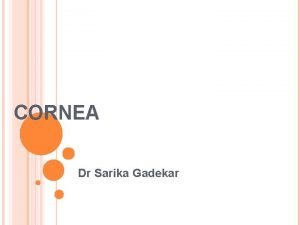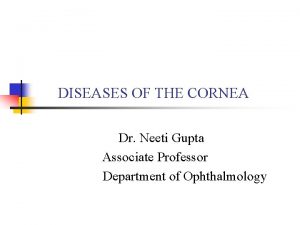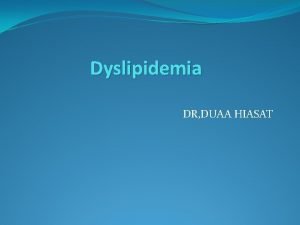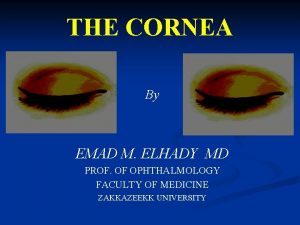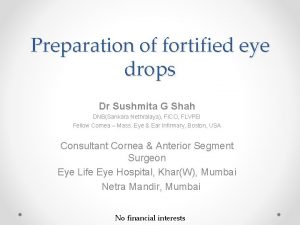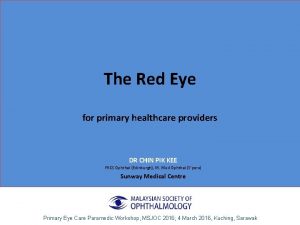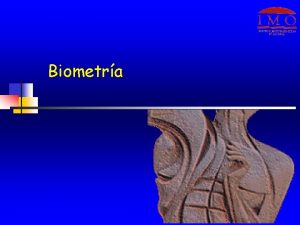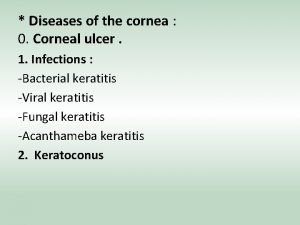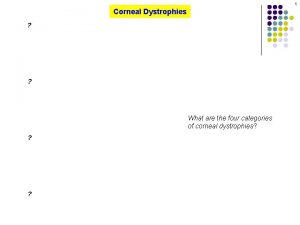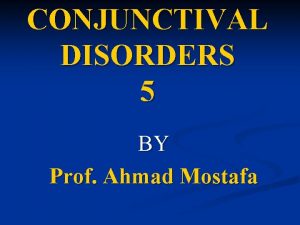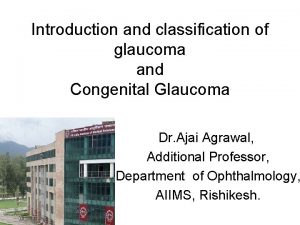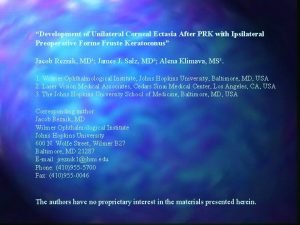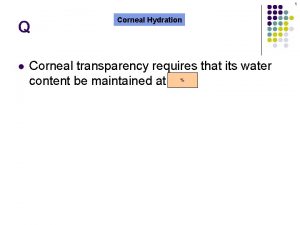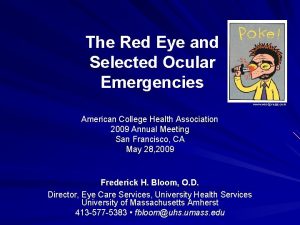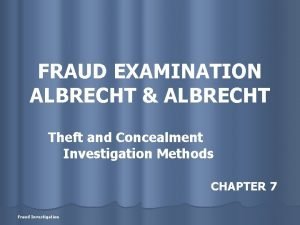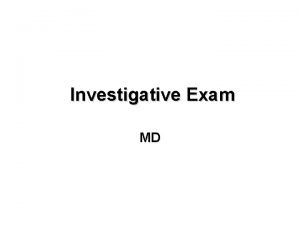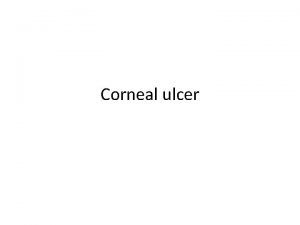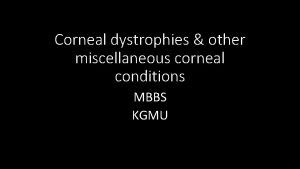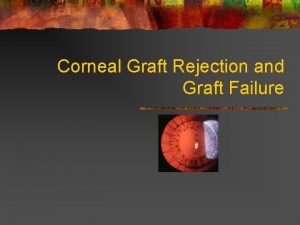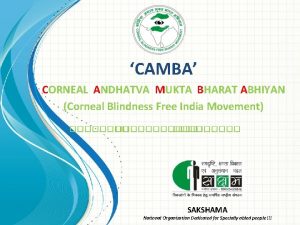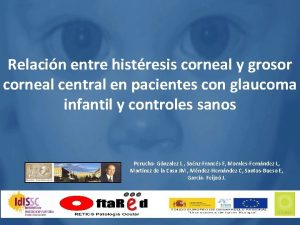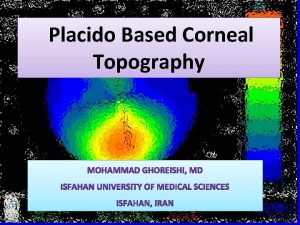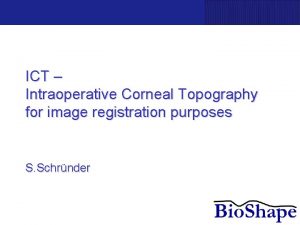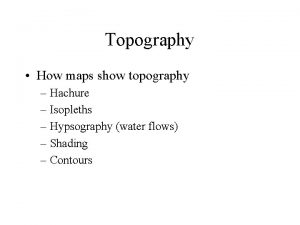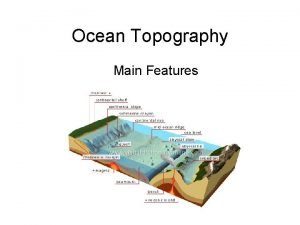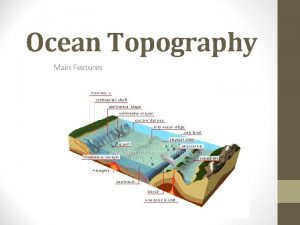Investigative Exam MD a The corneal topography shows






























- Slides: 30

Investigative Exam MD


a. The corneal topography shows corneal steepening with downward displacement of the apex. b. Early keratoconus (the maximum power of cone is only 47. 50 D)


Post myopic ablation


Decentered Abaltion


Post LASIK ectasia


• Optical coherence tomography shows a neurosensory detachment involving the macula. • Note the schisis cavity overlying the neurosensory detachment as well as the outer layer hole.




• Optical coherence tomography demonstrates a choroidal neovascular membrane and associated subretinal fluid


• Retinal pigment epithelium detachment


• Cystoid macular edema

THE PICTURE AND FLUORESCEIN ANGIOGRAPHY ARE TAKEN FROM A PATIENT COMPLAINING OF DISTORTED RIGHT VISION. A. WHAT PHASE IS THE FLUORESCEIN ANGIOGRAPHY? B. WHAT IS THE DIAGNOSIS? C. WHAT UNDERLYING MEDICAL CONDITION

• Venous phase • Macroaneurysm • Hypertention


Choroidal rupture

THE ABOVE B-SCAN WAS TAKEN FROM APATIENT WHO HAD A CATARACT SURGERY THE DAY BEFORE. A. WHAT IS THE DIAGNOSIS? B. SUGGEST TWO PREDISPOSING FACTORS.

• • • a. Expulsive suprachoroidal hemorrhage b. Multiple risk factors: Old age Hypertension Atherosclerosis Glaucoma or high preoperative IOP


THIS 70 YEAR-OLD MAN SUFFERED FROM PROGRESSIVE LEFT EXOPHTHALMOS. HIS CT SCAN IS SHOWN AS ABOVE. A. WHAT DOES THE CT SCAN SHOW? B. WHAT IS THE MOST LIKELY DIAGNOSIS?

a. Hyperostosis of the left lateral portion of the sphenoid with left proptosis. b. Sphenoid wing meningioma.

THE ABOVE MRI SCAN BELONGS TO A 3 YEAR-OLD GIRL. A. IN WHAT PLANE IS THIS SCAN TAKEN? B. IS THIS A T 1 OR T 2 WEIGHTED SCAN? C. WHAT IS THE MAIN ABNORMALITY SEEN? D. SUGGEST A POSSIBLE DIAGNOSIS?

Answer a. Axial scan of the orbit and brain b. T 1 (vitreous appears dark) C. Absence of the R. globe D. Enucleation of R. retinoblastoma
 How to read orbscan report
How to read orbscan report When god shows up he shows off
When god shows up he shows off My vision express support
My vision express support Gyroscopic animals
Gyroscopic animals Cornea light reflex test
Cornea light reflex test Corneal hysteresis definition
Corneal hysteresis definition Corneal abrasion left eye icd 10
Corneal abrasion left eye icd 10 Six cardinal fields of gaze
Six cardinal fields of gaze Tipos de queratómetro
Tipos de queratómetro Emrounds
Emrounds Arcus juvenilis causes
Arcus juvenilis causes Corneal transparency maintained by
Corneal transparency maintained by Corneal archus
Corneal archus Corneal luster
Corneal luster Cornea farinata
Cornea farinata Corneal reflex
Corneal reflex Pathology of corneal ulcer
Pathology of corneal ulcer Fortified eye drops meaning
Fortified eye drops meaning Ciliary flush
Ciliary flush Topografía corneal valores normales
Topografía corneal valores normales Corneal ulcer
Corneal ulcer Marilyn monroe always gets her man in la county
Marilyn monroe always gets her man in la county Corneal herbert's rosettes
Corneal herbert's rosettes Glaucoma classification
Glaucoma classification Corneal astigmatism vs lenticular astigmatism
Corneal astigmatism vs lenticular astigmatism Corneal preservation
Corneal preservation Ectasia after prk
Ectasia after prk Corneal transparency
Corneal transparency Ocular emergency definition
Ocular emergency definition Fraud examination albrecht
Fraud examination albrecht Mcad rebuttal to position statement
Mcad rebuttal to position statement



